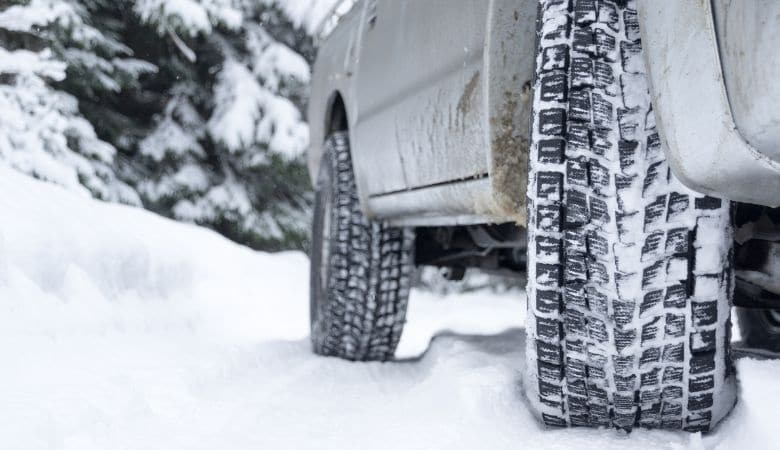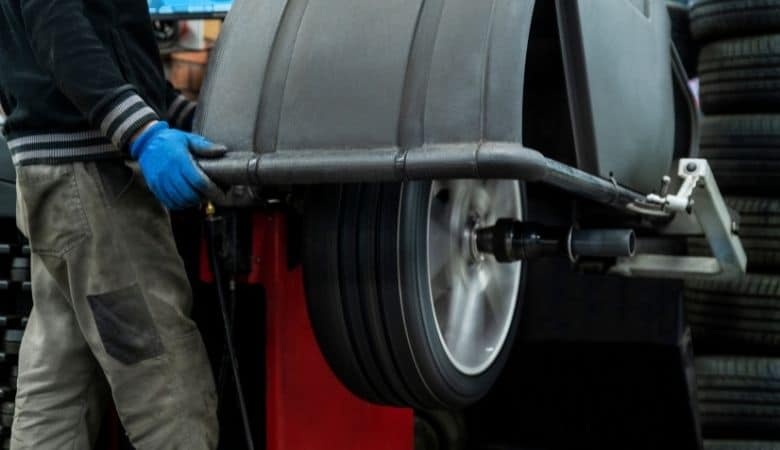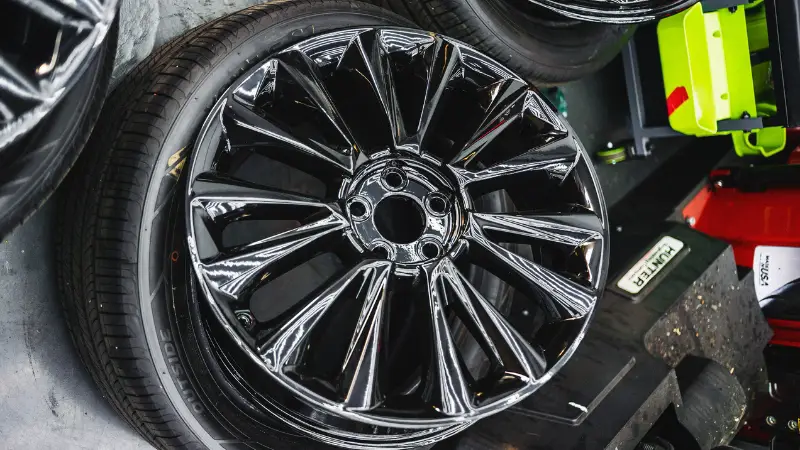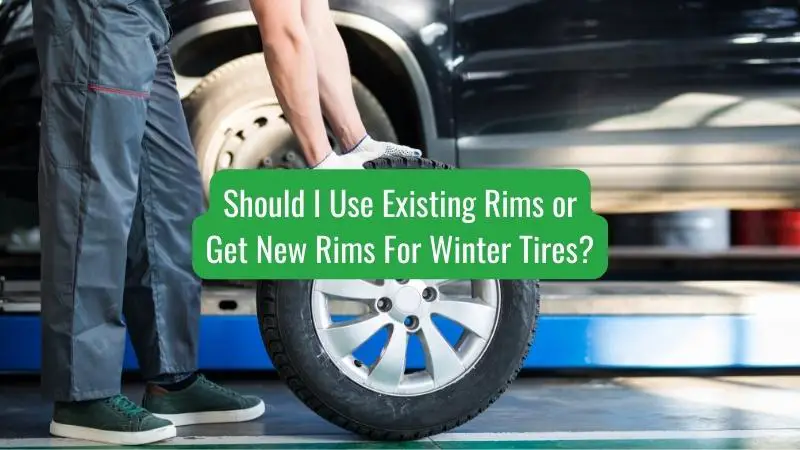As winter approaches, you may be wondering whether you should use your existing rims or invest in a new set of rims specifically for your winter tires.
This decision can impact your wallet and your vehicle’s performance during the cold months. It’s essential to consider the pros and cons of each option to determine which will be the most beneficial for you and your car.
Using your existing rims for winter tires might seem like a cost-effective option, but it can result in additional expenses in the long run, such as labor charges for bi-annual mounting and balancing, which can range from $50 to $100 each time.
On the other hand, purchasing a new set of rims for winter tires can provide several advantages. Notably, it can save you money in the long run by avoiding recurring expenses of mounting and balancing, and it also simplifies the process of switching between winter and all-season tires.
While you weigh your options, keep in mind that the right choice will also depend on factors such as your vehicle’s specific requirements, your budget, and the local weather conditions in your region.
Ultimately, the goal is to ensure your safety and optimize your vehicle’s performance during the challenging winter months.
Importance of Winter Tires

When the temperature drops, and snowy, icy roads become a reality, it’s crucial for your safety to have winter tires installed on your vehicle. Winter tires are specifically designed to handle the cold temperatures, snow, and ice that can make driving dangerous during the winter months.
Winter tires are made from a softer rubber compound, which allows them to stay pliable and flexible in low temperatures. This flexibility provides better traction and grip on snowy and icy road surfaces, ensuring your vehicle maintains control.
Additionally, winter tires feature more aggressive tread patterns and unique sipes that help grip the snow and slush on the road, improving traction considerably. These tires are specifically designed to cope with the challenges presented by winter road conditions and are far superior to all-season tires in this respect.
Moreover, using winter tires can decrease your stopping distance on cold road surfaces, preventing potential accidents and improving overall safety for you and other road users. It’s essential to make sure you have a full set of winter tires, as combining them with other tire types can lead to uneven grip and reduced performance, compromising your vehicle’s stability.
Now that you understand the importance of winter tires, the question remains whether to use your existing rims or invest in new ones for your winter set. Consider the pros and cons of each option to make the best decision for your driving needs and budget.
Using Existing Rims Vs. New Rims
Compatibility
When choosing between using your existing rims or getting new rims for your winter tires, consider compatibility. It is essential to ensure that the winter tires you select are compatible with the rims, whether they are the originals or new ones.
Always double-check the size and fit to guarantee proper installation and safe operation. If you’re unsure where to start, consult your vehicle owner’s manual for information on wheel and tire compatibility.
Cost Comparison
Cost is an important factor when debating between using existing rims or purchasing new ones. When you opt to use your existing rims, you will save money on the initial investment since you won’t be buying an additional set of rims.
However, it’s important to note that tire mounting and balancing costs may be higher with each seasonal change when using the same rims. Buying tires only will save you from $320 to $640 on the cost of the set.

Performance Benefits
Performance benefits should be considered when choosing between existing and new rims. Smaller diameter wheels with increased sidewall height can improve ride quality on rough, winter roads.
Additionally, having dedicated rims for your winter tires means they are already balanced and mounted, making the seasonal changeover faster and more convenient.
Aesthetics and Durability
New rims not only offer an opportunity to customize the look of your vehicle but also protect your original rims from the harsh winter elements. Salt, snow, and ice can all take a toll on the appearance and durability of your rims.
By having a separate set of rims for winter and summer tires, you preserve the condition of your original wheels, prolonging their life and maintaining their appearance.
Pros and Cons of Using Existing Rims
When it comes to winter tires, you might be wondering whether you should use your existing rims or get new ones specifically for the colder months. Here are some pros and cons of using your existing rims for winter tires:
Pros:
- Cost-Effective: One of the main advantages of using existing rims is that it can save you money. Purchasing new rims can be an added expense that you may not want to incur every winter season. By using your current rims, you can allocate your budget towards high-quality winter tires instead. LiveAbout mentions that this decision largely depends on your personal preference, space, and budget.
- Storage Space: Using your existing rims means you won’t have to worry about finding storage space for an extra set of rims during the season. This is especially helpful for those with limited storage in their homes or garages, making it more feasible and convenient.
Cons:
- More Frequent Tire Changes: One downside to using existing rims is that you’ll need to switch your tires each time the seasons change. This process can be time-consuming and may require professional help to ensure the tires are properly mounted and balanced. According to Testing Autos, having separate rims for winter tires can make the seasonal tire swap faster and cheaper.
- Potential Wear and Tear: Frequent tire mounting and dismounting on the same set of rims can increase wear and tear. This can potentially lead to issues with the rims and may require repair or replacement in the long run. Having dedicated rims for your winter tires can help minimize this risk.
- Compatibility and Performance: Sometimes, using your existing rims may not be compatible with the specific winter tires you choose or may not optimize their performance. By purchasing new rims specifically designed for winter tires, you can ensure compatibility and improved performance. Uchanics explains how buying tires with rims can ensure compatibility and save time and effort in the mounting process.
Consider these pros and cons while deciding whether to use your existing rims or invest in a new set of rims for your winter tires. The decision will ultimately depend on your budget, storage space, and how often you’re willing to change your tires.
Pros and Cons of Purchasing New Rims
When deciding whether to use existing rims or buy new rims for your winter tires, it is essential to consider the pros and cons to make the best decision for your needs and budget.
Pros:
- Convenience: Having a second set of rims makes it easier to switch between your winter and all-season tires, as you won’t need to deal with mounting and balancing each time you change tires.
- Reduced Wear: Changing tires frequently on the same set of rims can cause increased wear on your tires and rims. Using a dedicated set of rims for your winter tires can help reduce this wear and potentially save you money in the long run.
- Customization: Purchasing a new set of rims allows you to choose a style or design that complements your vehicle and enhances its appearance.
Cons:
- Upfront Cost: A new set of rims comes with an additional expense. Depending on the material and quality, this can be a significant investment.
- Storage: You will need a dedicated space to store the extra set of rims and tires when they are not in use. This can be a challenge if you have limited storage space at your home or garage.
- Compatibility: It is crucial to ensure that the new rims you purchase are compatible with your vehicle’s make and model. Failure to do so could lead to performance issues or potential damage to your vehicle.
Consider these pros and cons when deciding whether to purchase new rims for your winter tires. Ultimately, the choice will depend on your specific needs, budget, and preferences.
Factors to Consider When Choosing Rims for Winter Tires
When selecting rims for your winter tires, there are several factors to consider. In this section, we will discuss vehicle specifications, tire size, and budget.
Vehicle Specifications
Before choosing new rims, you should consult your vehicle’s owner manual or look for the placard on the driver’s side door jamb to find the recommended wheel and tire measurements. This information is crucial for ensuring optimal performance, safety, and fuel efficiency.
Tire Size
Winter tires often require a different size than your regular tires; therefore, determine the proper size for your winter tires before purchasing new rims.
According to TireBuyer, it’s not uncommon for a vehicle to have different wheel/tire sizes based on the trim package. Consider the size difference and choose rims that will accommodate your winter tires correctly.
Budget
When choosing rims for your winter tires, it’s essential to consider your budget. There are primarily two types of rims available: steel and alloy rims. Park Muffler states that steel rims are typically less expensive, while alloy rims have a wider price range. Consider the benefits of each type and choose a set of rims that fits within your budget.
In conclusion, to make the most informed decision about whether to use existing rims or purchase new rims for your winter tires, consider your vehicle specifications, appropriate tire size, and budget. This information will help you achieve optimal performance, safety, and fuel efficiency during the winter season.
How to Measure Rims for Proper Sizing

When it comes to finding the right rims for your winter tires, it’s essential to know how to measure them accurately. In this section, we will guide you through the process of measuring rims to ensure they’re the correct size for your needs.
First, let’s focus on measuring the rim’s diameter. Lay the wheel down and place the measuring tape’s hook on one edge of the rim. Drag the measuring tape across the center of the wheel to the opposite edge for an accurate diameter measurement. Remember not to include the wheel lip on both sides while measuring.
Now, let’s measure the wheel width. Similar to measuring diameter, you should focus on the barrel section of the rim and not the overall outside width. Place the measuring tape on one side of the barrel section and measure across to the other side, as demonstrated in this post.
Another essential factor when selecting rims is the wheel offset, which is the distance from the hub mounting surface to the center line of the wheel. You can measure wheel offset by using a straightedge and a ruler. Place the straightedge vertically on the wheel’s hub mounting surface, then measure the distance from the straightedge to the wheel’s center line.
Here’s a summary of the measurements you need to take:
- Rim Diameter: Measure from edge to edge of the rim, excluding wheel lip
- Wheel Width: Measure barrel section from one side to the other
- Wheel Offset: Measure distance from hub mounting surface to wheel center line
With these measurements in hand, you’ll be able to make informed decisions about whether you should use existing rims or get new rims for your winter tires.
Conclusion
Deciding whether to use your existing rims or get new ones for your winter tires depends on your preferences and budget. Using your current rims can save you money upfront, but might require more work during tire changes and increase the chances of tire damage each time they’re mounted and dismounted.
On the other hand, investing in a separate set of rims for winter tires can extend the life of both tires and rims, as switching between seasonal sets becomes easier and more efficient.
It’s essential to consider factors such as your vehicle’s wheel and tire requirements, and the harshness of winter conditions in your region when making this decision. Smaller wheels and narrower tires, for instance, can offer better traction and control during winter, but might also lead to purchasing a new set of rims.
In summary, evaluate your individual situation and weigh the pros and cons of each option for your winter tire set up. Ultimately, it’s important to choose the approach that best suits your needs and keeps your vehicle safe during the winter months.
Hi, my name is Niklas, the head content creator & CEO of Whirling Wheelz. I am very interested in vehicles of all kinds, mainly cars. I have a car mechanics degree from high school and a big hobby of mine is to follow the WRC (World Rally Championship) both online and through travel.

